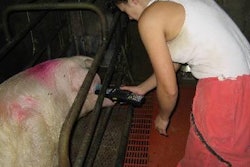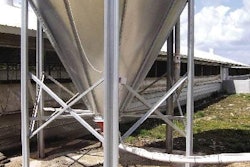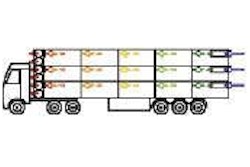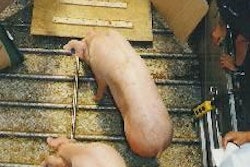
What is called biosecurity in pig production is a set of measures that should prevent herd contamination and reduce disease spreading. Every unit manager needs to give serious consideration to the most important ways of pathogen transmission between farms and guard against them in order to maintain herd health.
This issue of the transmission of pathogens is becoming increasingly important as the market grows more and more international. But biosecurity is not only essential in a situation involving notifiable diseases. The underlying rules should also be considered with respect to all major infections and applied routinely as part of normal herd health care.
It begins with the assumption that the pathogen is a hazard, even if the entry of a particular infection into a unit does not systematically result in disease (in most multi-factorial disorders, the infectious agent is necessary but not the only condition for disease expression). Avoiding the pathogen's introduction and reducing the exposure of pigs within the farm therefore are crucial steps in disease prevention and control.
The living pig is the best carrier of specific pathogens. It means in theory that a herd risks bringing in new health threats whenever pigs are purchased. How, then, can we evaluate the real risk of pathogen transfer? In fact, the status of the pig's farm of origin regarding infection can be assessed easily for most disease agents. Although they are not exhaustive, tools are now available to detect infection at herd level as a basis for assessing the likelihood of its pigs transferring pathogens to a recipient site.
We have reliable serological tests for the purpose. Finding specific antibodies in the blood does not properly supply information about pathogen shedding by the pigs due to be moved, but it does provide evidence of the herd infection. It remains a key piece of information to be used in making decisions from a biosecurity standpoint. Other methods can be used, such as bacteriological examination and PCR testing of samples taken from the pigs. Further information can be obtained from veterinary checks of animals at slaughter. Putting the results together allows the health level of herds selling replacement stock to be scored with some accuracy.
Besides this assessment, taking animals from a single source appears to be less risky than sourcing from multiple units. Even with these precautions in place, however, the recipient farm still is strongly advised to put all new arrivals into a quarantine (isolation/acclimatisation) phase in an isolated building, located at a safe distance from the main premises. Pigs born on the home farm can be placed in contact to act as sentinels. Furthermore, laboratory investigations can be performed on both groups at the end of the quarantine period.
Herds using artificial insemination can bring in boar semen instead of live pigs. But is the semen safe? Good hygiene at the boar stud will address the possibility of bacteria being carried in traces of faecal material and any bacterial contamination is further controlled by the inclusion of permitted antibiotics. Viruses are of much greater concern in practice. Viral shedding through semen has been well documented in both experimentally and naturally infected boars. Most of the viruses can be excreted into the semen. Although virus detection in the semen does not necessarily result in infection and disease in the inseminated sows, constant efforts have to be directed at maintaining a high health status in AI centres through the recruitment of clean boars. The implementation of quality assurance in those enterprises should be a priority.
Of course, the pig and its germplasm are not the only potential carriers of disease.
The role of people as mechanical vectors for pathogens has been suspected for several decades. But investigations in recent years have revealed that people are unlikely to be involved in disease transmission provided the main rules are respected. When moving from one farm to the next, therefore, be sure all personnel wash their hands both on leaving and on entering. Everyone should use clean clothes (boots, appropriate coveralls, caps, gloves) belonging to the farm and wear a dust mask. Additional measures apply in case of acute outbreaks, such as a requirement for visitors to be free from exposure to pigs for 48 hours and to shower before entry.
Birds have the greatest potential of spreading major diseases over a long distance. Over shorter distances, rodents and flies might also intervene. Efficient rodent extermination measures are certainly to be encouraged. An efficient fence around the premises is also wise, to keep out other animals. Some years ago in France, a link to wild animals was suspected when sporadic cases of brucellosis occurred on outdoor pig units.
Vehicles, especially those transporting pigs or cadavers, are highly suspect as mechanical vectors of pathogens. A well-designed and easily cleaned loading bay is recommended. The trucks entering the farm for loading pigs should be empty and clean. A good precaution is to locate the loading facility at the farm's perimeter, at a certain distance from the farm buildings. Regarding cadavers, we recommend having special tight containers in which to place dead animals. These containers have to be located outside the premises, if possible in a small closed building, far enough from the premises for the rendering trucks to remove without endangering the herd. The rendering trucks themselves must also be tight-fitting.

















